As the recent heatwave simmered on, tempura oysters were being washed down with chilled rosé on the beachfront tables at Little Rock, an offshoot of Folkestone’s Michelin starred Rocksalt restaurant. Looking from the shipping container that houses it past a handful of palm trees down the long shingle beach, a huge crane punctuated the clear blue sky above the bright white curves of the town’s biggest new development.
The Folkestone Harbour and Seafront Development Company is hoping to woo a wave of home-buyers to the Kent Channel town’s seafront, with the first phase of 1,000 new homes planned along the beach. The seaside resort and port, in the same vein as Margate and Hastings, has been trying to rebrand itself as a thriving arts centre. In its narrow cobbled Old High Street – once Charles Dickens’s favourite – boarded-up shops have been replaced with a Creative Quarter full of colourfully painted galleries, studios and retailers.

The area around the harbour, including the Harbour Arm, has also emerged from decades of decline and neglect to offer food pop-ups, spruced-up walkways and even a champagne bar at its lighthouse. The decommissioned Victorian Folkestone Harbour train station and tracks are now a New York ‘High Line’ style stretch of milling people and musicians; the Goods Yard has become a hub of container eateries with a big TV screen showing sporting events; and the world’s first purpose-built multi-storey skatepark, F51, opened last year.
The high-speed train from Folkestone to London St Pancras at 55 minutes is faster than those from the capital to Brighton – and there’s easier access to France via Eurotunnel
Sir Roger De Haan, non-executive chairman of Saga Group, the town’s principal employer, heads up the development company that has been behind all of this. He grew up in the town, where his parents ran a hotel, and is fiercely passionate about securing its future by injecting a mix of new creative, sporting and education facilities – plus those 1,000 homes.
‘Back in 2004 Folkestone had no tourists. Like many seaside resorts it was in rather a sad state and needed to reinvent itself,’ he says. ‘It’s taken years [of planning and failed masterplans] to reach this stage, but now the harbour has a new purpose.’ His company has clearly done much for the town already, regenerating dilapidated sites that had attracted antisocial behaviour, such as the former Rotunda amusement park and the Marine Parade, Folkestone’s most crime-ridden street five years ago.
Despite this, not all the locals are sold on the arrival of so many new homes on the beachfront, which will mean construction sites for years to come and a changed dynamic for the town. Critics complain that family townhouses at Shoreline Crescent cost from £1.8 million, two-bedroom flats from £685,000 and one-beds are £495,000 – though 8 per cent of the scheme will be affordable housing, and owners will not be allowed to rent them out on Airbnb.
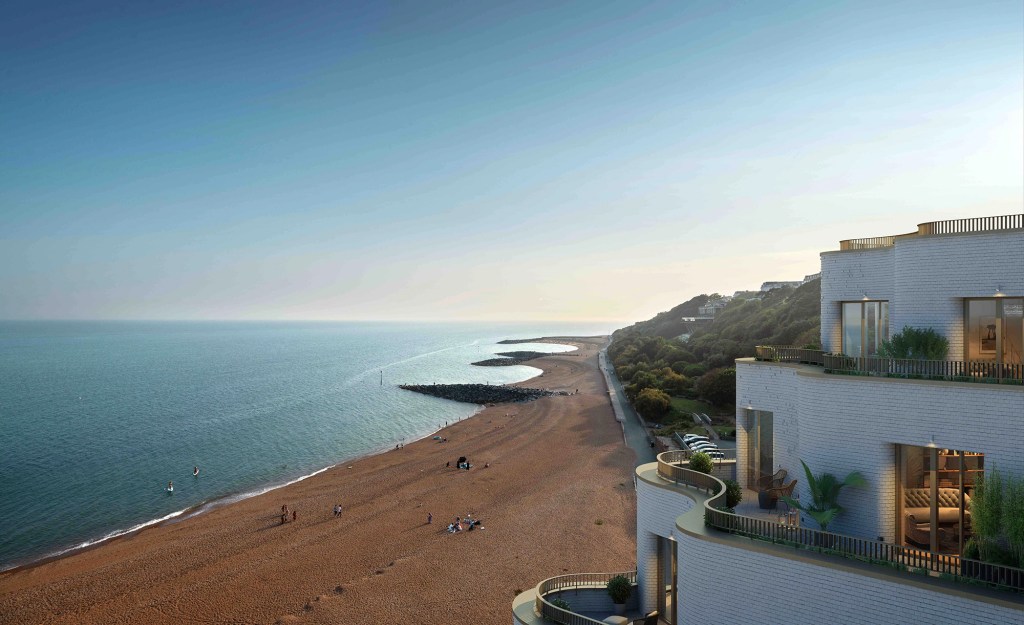
The average property in Folkestone sold for £293,210 last year, with the average flat at £202,070, according to Hamptons using Land Registry data. The former is a 27 per cent increase since 2019, which is a bigger rise than Brighton, though Folkestone remains nearly £200,000 less expensive.
Will some house-hunters come to Folkestone instead? The high-speed train from Folkestone to London St Pancras at 55 minutes is actually faster than those from the capital to Brighton – and there’s easier access to France via Eurotunnel. Folkestone also has two grammar schools and residents can walk straight out on to the beach with paddleboard or sea-swimming tow float.
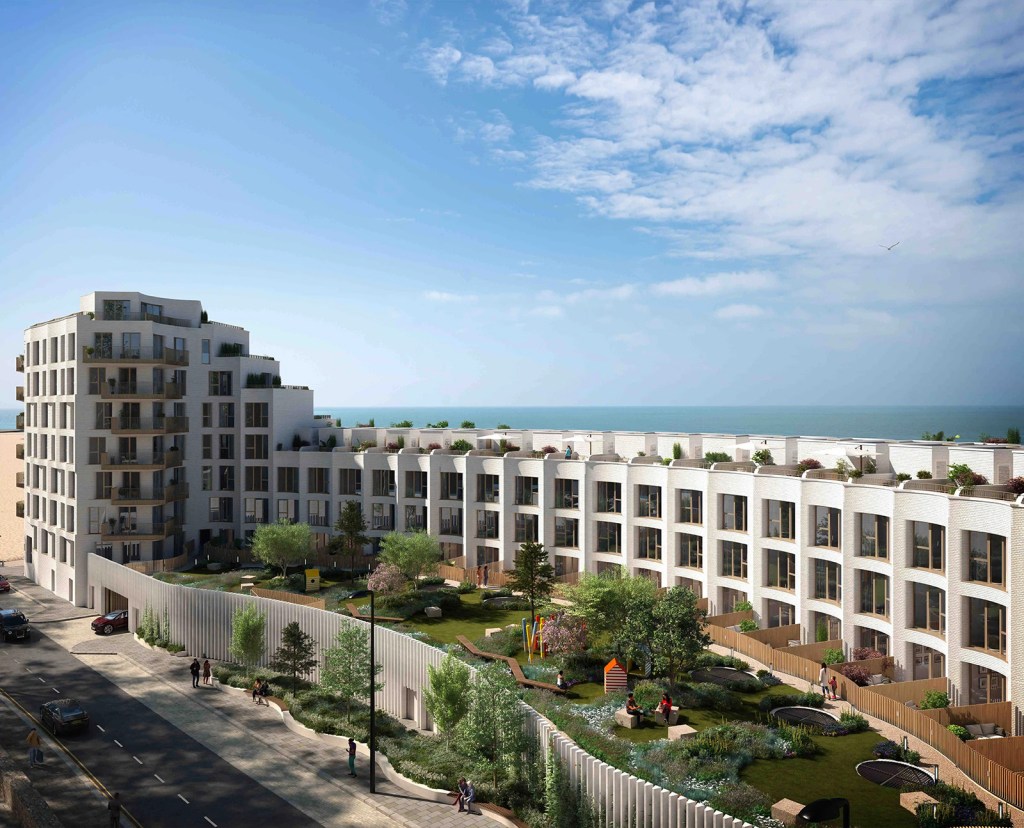
With the ACME-designed white ceramic tiled curves taking on the pinkish sunset hue, its rooftop terraces giving views to France on a clear day and show homes stylishly dressed by the 8 Holland Street design studio, the Shoreline Crescent development is without doubt slickly done. But it is not a project aimed at local first-time buyers, admits the board director who shows me around. It is launching amid a mortgage crisis, but he says: ‘Most buyers will probably be older and will not need a mortgage.’
According to the analyst PropCast, 47 per cent of all the second-hand properties for sale in Folkestone are currently under offer, down from 69 per cent a year ago, which makes it a cooler market but not too bleak. And some new-builds are selling. Just behind the Leas Lift, a funicular ‘water balance lift’ that will be restored to provide easier access to the clifftop, is the Grade II-listed Edwardian Leas Pavilion that had also fallen into disrepair. More restoration will be accompanied by 91 luxury apartments – starting from £395,000 – by developer Gustavia and the Belgian Life Tree Group, with completion expected next year. Local downsizers have already been buying at Leas Pavilion, along with a handful of south London second-home owners and some investors.
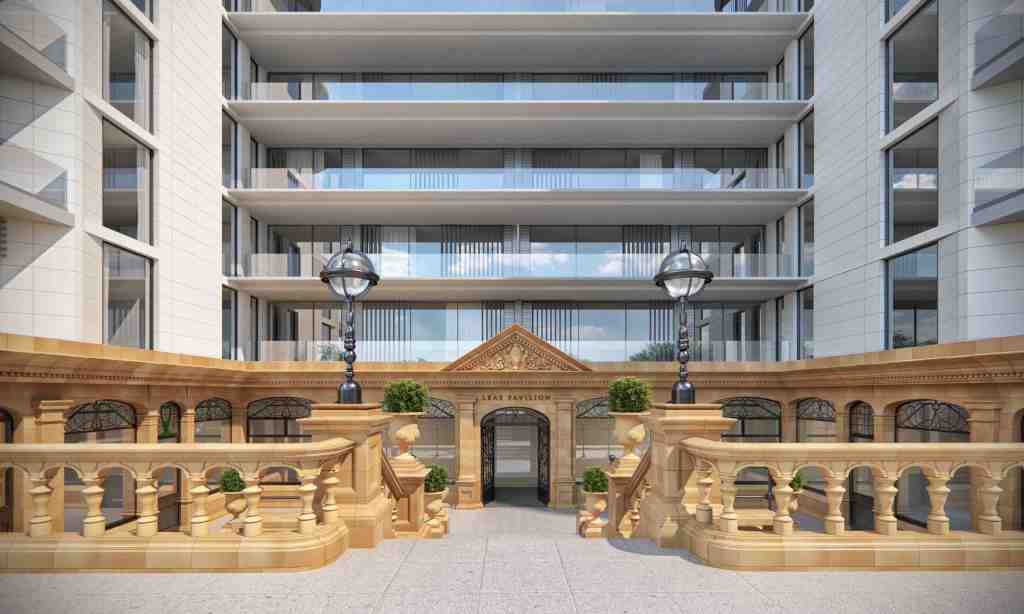
It’s in the West End of Folkestone, the expensive part of town, where large period houses in the wide, leafy streets around the hub of independent shops known as ‘Bouverie Village’ can cost £1 million-plus, though most properties are nearer £500,000. Leas Pavilion will allow long-term rentals, but not Airbnb, says James Brine of Strutt and Parker, who reports that 30 per cent of the apartments have sold. ‘Folkestone in improving, albeit at an early stage,’ he says.
With thin pickings for Airbnb investors Folkestone might follow a different path – for better or for worse – than Brighton or Hastings.

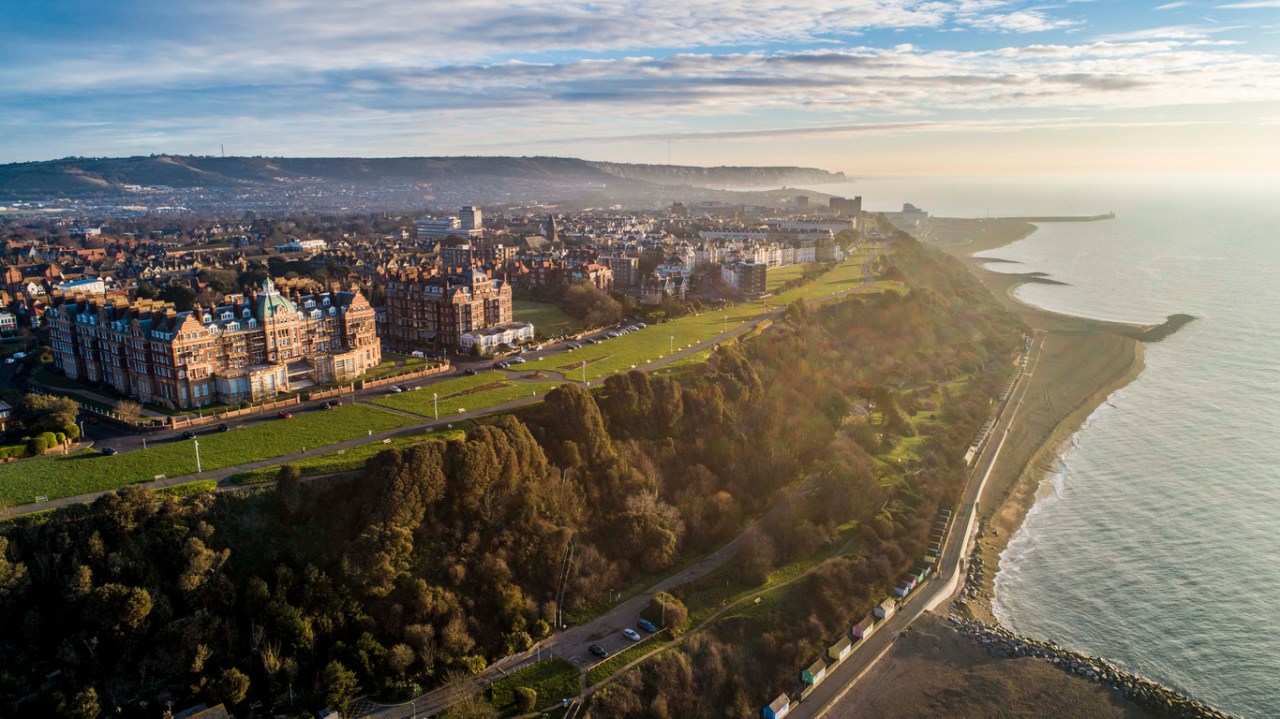
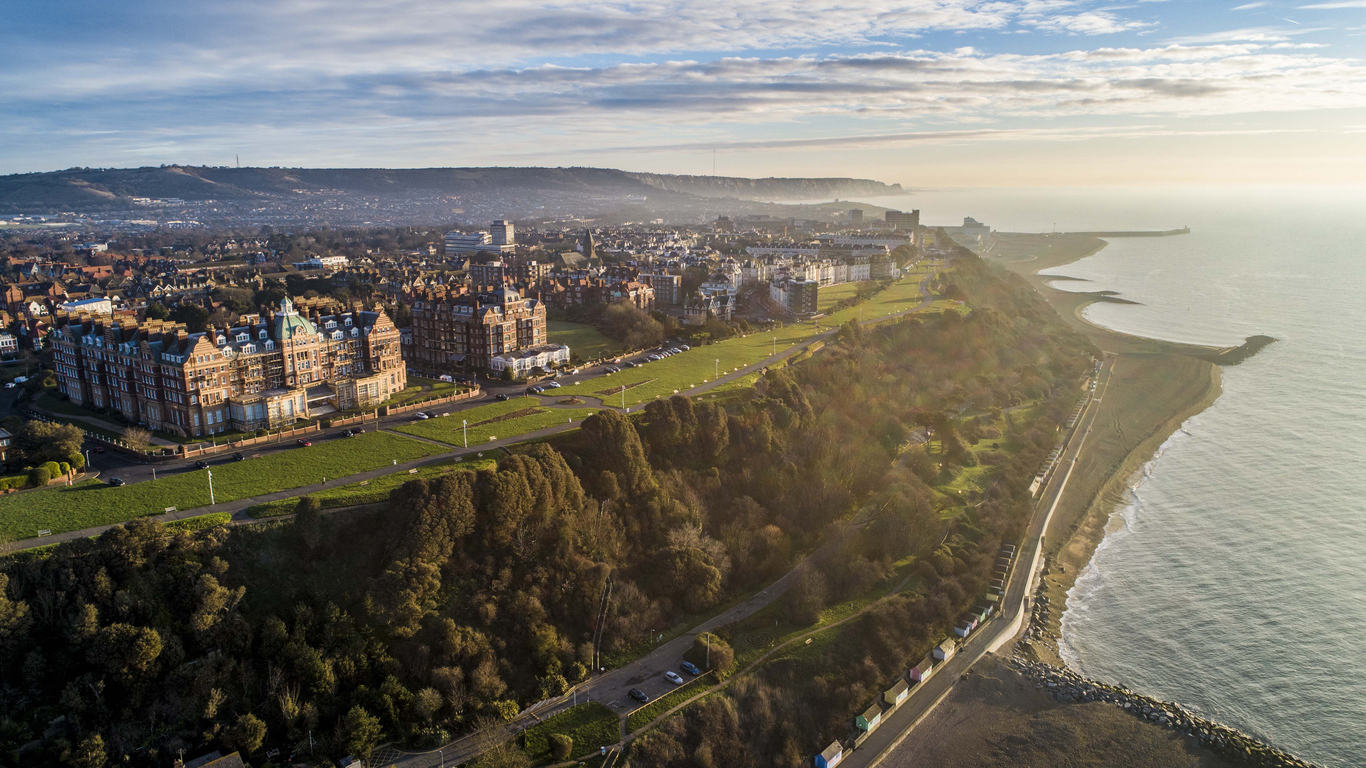




Comments